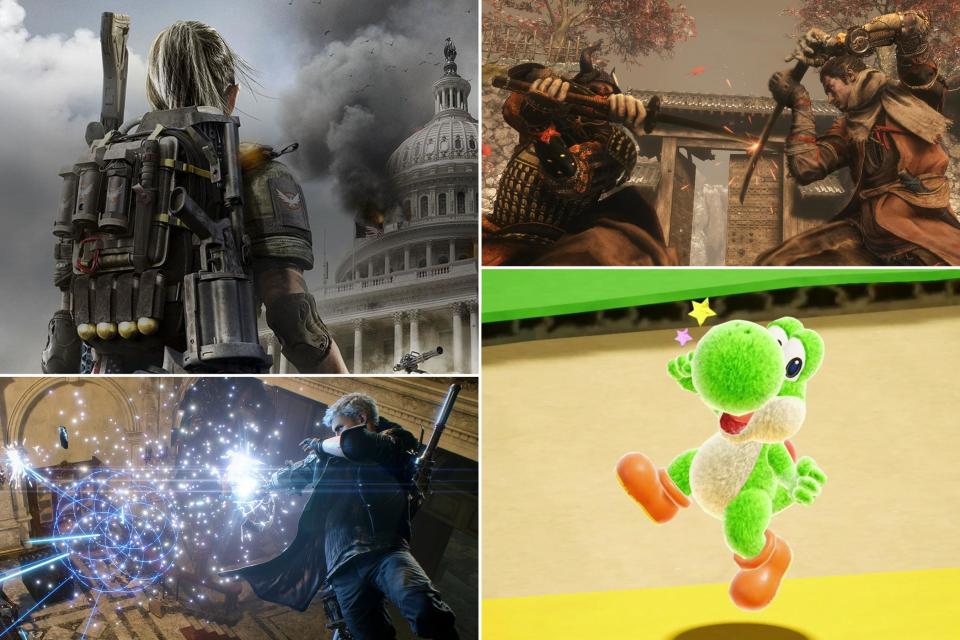EW videogame review roundup: Sekiro , Yoshi , The Division 2, and more
March’s releases included a contender for the hardest game EW has ever played (and enjoyed), a contender for the shooter-looter crown, and a contender for the cutest version of everyone’s favorite egg-throwing dinosaur. Find out below which of the big and not-so-big games of the month are worth picking up.
Sekiro: Shadows Die Twice
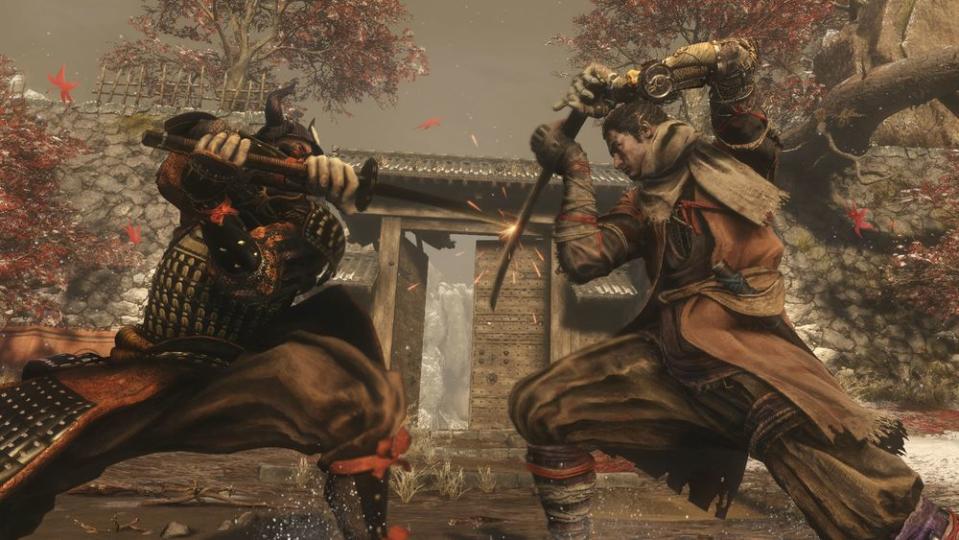
Since Sekiro: Shadows Die Twice is the first major title developed by FromSoftware following the completion of Dark Souls III in 2017, the urge to fall into the “[blank] is the Dark Souls of [blank]” trap could have been overwhelming. Fortunately, Sekiro is far more than a Japan-set Soulsborne offshoot. Featuring masterful combat mechanics unlike anything the studio, or any studio, has produced before, Sekiro establishes a strong identity while honoring the quality of its FromSoftware pedigree.
Unlike previous FromSoftware player characters, Sekiro is pre-set and fully voice-acted. While he is less than vociferous, Sekiro’s established personality makes him something more than a character-creator-generated cypher, and the story and NPC interactions are clearer for it, though not without a sense of mystery.
Level design for each location, built for grappling-hook-enabled vertical mobility and strategic assassination, is excellent, and the game’s art direction combines the natural beauty of Japan’s mountain and forest biomes with Sengoku-era castle architecture.
Scattered throughout these locales are occasional bosses, and much more frequent but often equally daunting mid-bosses. Marketing for Sekiro asks players to learn to “kill ingeniously,” and that direction is apt, as the bosses are blisteringly difficult. Some enemies are easier to block, while others call for dodging. Still others require liberal use of timed deflection to whittle away Posture. Many require judicious usage of all three skill sets, along with upgradeable Combat Art attacks and Prosthetic Tools.
For the most part, the gameplay strikes the balance of frustration to reward Soulsborne players crave, but a few boss battles overstay their welcome. Mastering a tough enemy’s patterns is exhilarating, but executing on those unforgiving patterns for 10 solid minutes can become a slog, particularly on attempt number 35.
Sekiro is undoubtedly one of the best games I’ve played this year, but it may also be one of the most demanding games I’ve played in my lifetime. It certainly won’t be for everyone, but for those with an excess of patience and manual dexterity, Sekiro is a trial that should not be missed. Read our full review. Grade: A-
—Evan Lewis
The Division 2
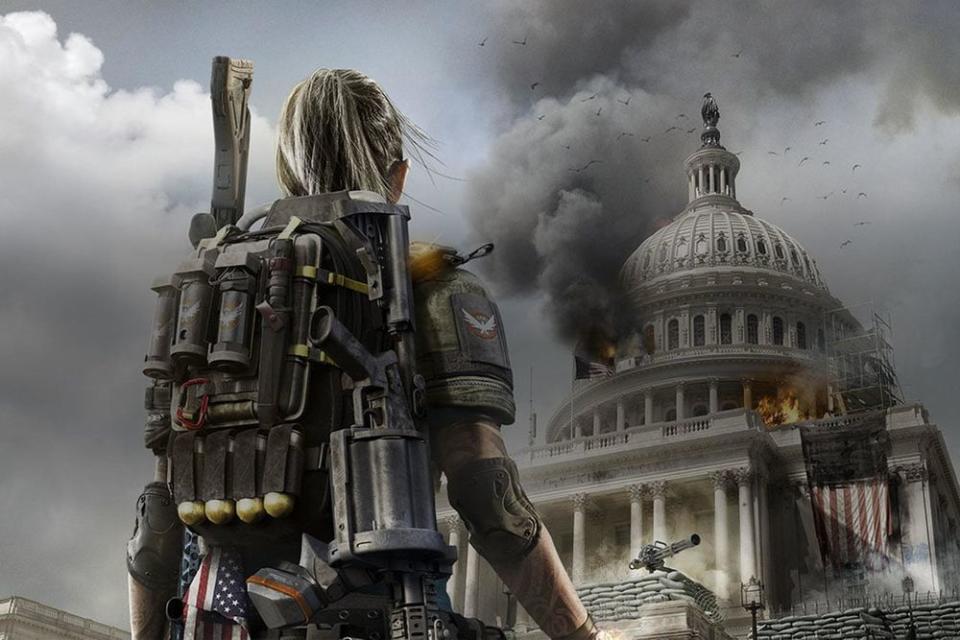
Massive Entertainment hits the ground running with The Division 2, delivering a complete experience that entertains from start to finish, and beyond.
Visually, The Division 2 is outstanding. Landmarks like the Washington Monument and the White House make their obligatory appearances, projecting gravitas as American symbols now being used for less noble purposes than the founders had intended. The day/night cycles and weather effects can go unnoticed, but a lightning storm illuminating the silhouette of an enemy-controlled Capitol Building definitely heightens the drama.
Even without dramatic weather, the gunplay conveys strong sensory feedback, and the satisfying *foomp* of sticking a target with an explosive crossbow bolt never gets old. Adding to the satisfaction is competent enemy AI, which feels, well, intelligent. In some cover-based shooters, enemies’ sedentary patterns can feel like glorified whack-a-mole, but The Division 2’s adversaries feel more real because they’re capable of flanking, chasing, and adapting.
In terms of loot and building a loadout, upgrades are doled out at a less impactful but more frequent rate that encourages experimentation.
The weakest trait of The Division 2 is the story, but it doesn’t ruin the player experience, largely because it doesn’t try to insert itself where it doesn’t belong. Plotwise, the game is exactly what comes to mind when you think post-apocalypse Tom Clancy military-themed shooter. Still, The Division 2 delivers a robust game that doesn’t shatter any expectations, but at the same time comes chock-full of well-crafted content that has both novelty and staying power. Read our full review. Grade: B+
—Henrique DaMour
Yoshi’s Crafted World
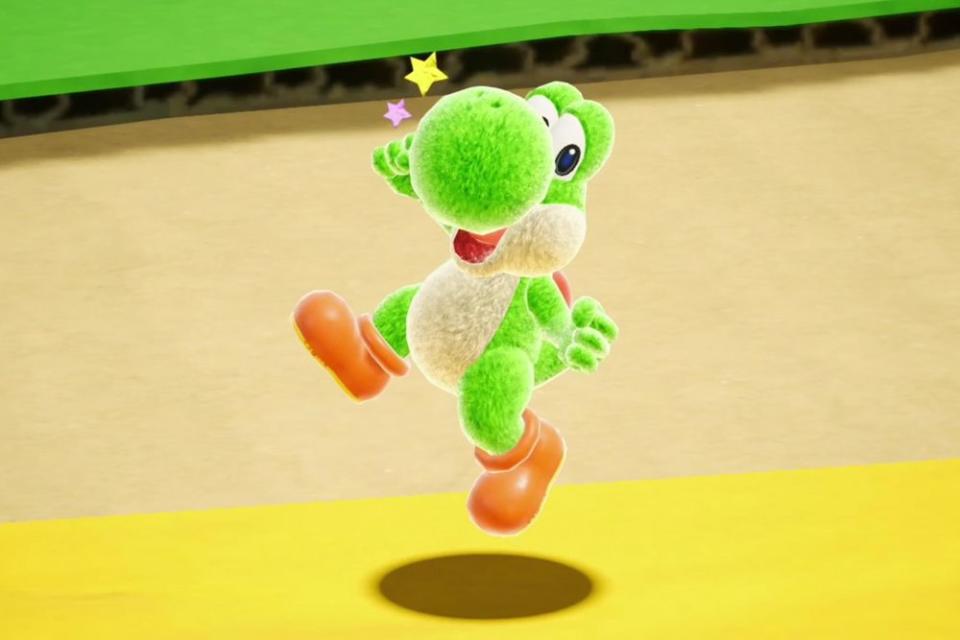
At the nexus of Paper Mario and the vague yet warm memory you still have of Yoshi’s Story, the latest standalone Yoshi title is a sleek slice of fuzzy nostalgia custom-made for new or wistful puzzle hounds. Featuring a stunning, colorful, almost stop-motion-like aesthetic of cardboard and paper and string and fabric (an Etsy-happy style Nintendo has previously exercised in Yoshi’s Woolly World and Kirby’s Epic Yarn), Yoshi’s Crafted World is the best this dinosaur has ever looked — and perhaps the most thought-provoking a Yoshi adventure has ever been.
The key mechanic (besides Yoshi’s iconic struggle-jump) is an omnidirectional egg-shooting system that deters players from the usual platformer speed-runs by encouraging them to stop, smell the flowers, then shoot blindly at them to see if there’s a Shy Guy hiding in the bushes. The game is loaded with collectibles, both necessary for progression and fashionably frivolous, and there’s a certain glee in pursuing them all (Crafted World plays a bit like a modern mobile game in that sense). Refreshingly, at every juncture when the grab-and-go missions veer toward chore territory, Crafted World takes a sometimes-literal perspective spin and changes up its mechanics just enough to offer an inventive new gameplay approach or creative puzzle variant that catches you by surprise and winds you up for at least another round.
As breezy as it occasionally feels, it’s not not challenging. But adult players may find themselves feeling satisfied and excited by the idea of a young kid wading into Yoshi territory for the first time with this title. There’s a problem-solving slice of the brain that wires into overdrive here, just educational and clever enough that it’s worth the hustle, and that in and of itself, ages be damned, is why puzzlers remain a necessary genre. All we can hope for is that every once in a while, the great puzzles get a fresh coat of paint — in this case, your choice of acrylic, watercolor, or tempera. Grade: B
—Marc Snetiker
Devil May Cry 5
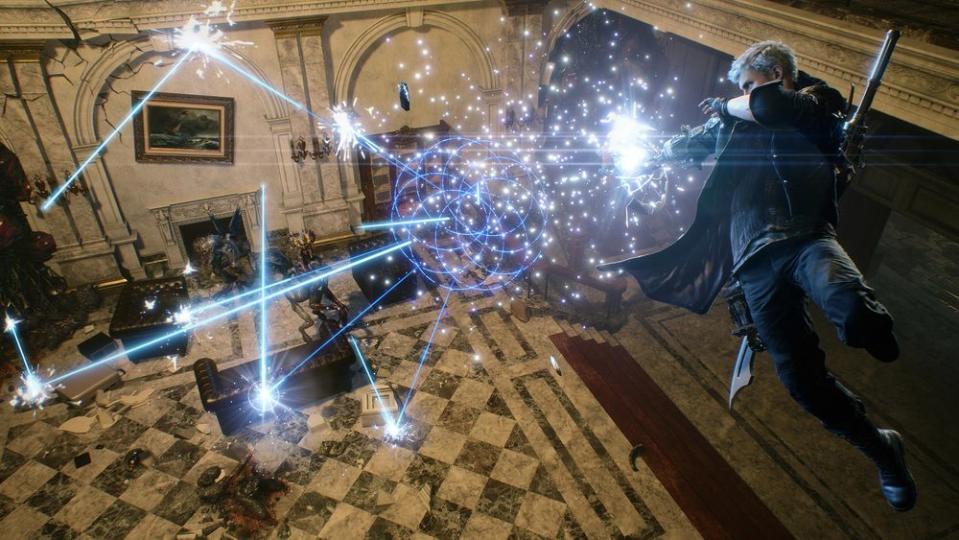
As the originator of a genre Capcom likes to refer to as “over-the-top,” Devil May Cry occupies a special spot in many a twitchy gamer’s heart, and DMC 5 delivers a long-awaited return to franchise form 11 years after its direct prequel, DMC 4. For experienced players, the gameplay fits like a comfortably worn-in red leather coat, but the quirky legacy of stylistic choices and combat rhythms may take first-timers a few hours to parse.
DMC 5 is faithful to the franchise’s history in that it’s an unapologetically action-forward experience. Most of the arcadey missions involve a linear corridor leading from one combat encounter to the next, with a few off-the-beaten-path secrets sprinkled in for flavor. In another game, this setup might get stale, but for DMC, the approach of staying laser-focused on stellar combat is a strength. The fact that the perspective shifts between three protagonists — DMC 4’s Nero, series mainstay Dante, and newcomer V — also helps to diversify the experience. All three characters are afforded a plethora of upgrade options, allowing players to customize a style around melee combat, ranged combat, special abilities, or any combination of the above.
The series’ outlandish sensibility and wild humor are some of its biggest draws, but they aren’t without their oversteps in DMC 5, particularly when it comes to the blatant sexualization and objectification of female side characters. In the grander scheme of things, though, character foibles and a barely there plot hardly register when weighed against the giddy absurdity of non-stop SSStylish demon-slaying. Read our full review. Grade: B
—E.L.
Baba Is You
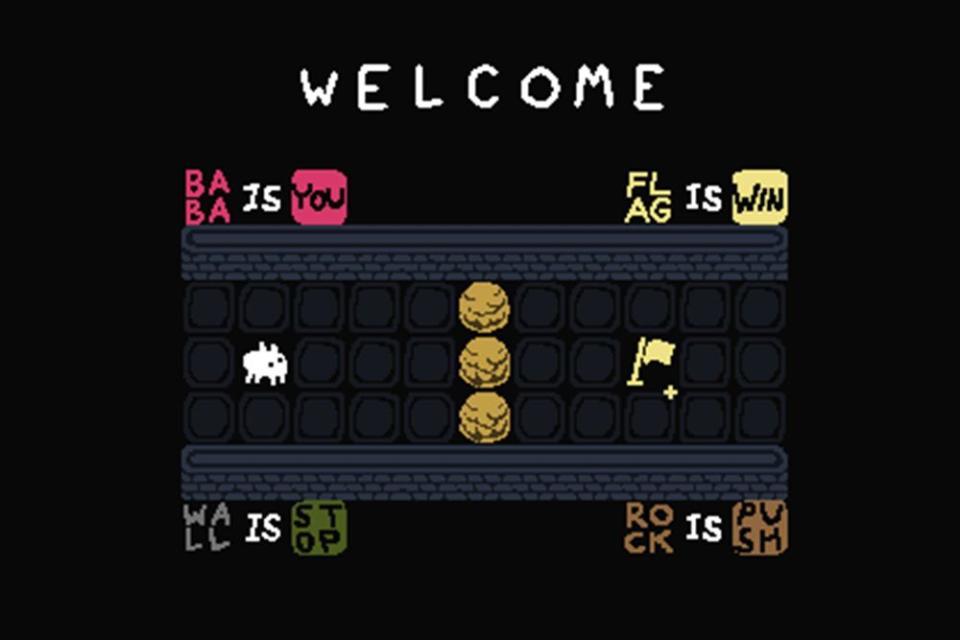
Baba Is You is a puzzle game all about rewriting its own rules, and it’s fantastically mind-bending. To start, Baba, a little white bunny-like creature, is you. The fact that Baba is you seems fairly straightforward, until it isn’t. What if, instead, Rock is you? Or, what if Wall is you? What if Baba is win?
Each level of Baba Is You displays the rules for each object present on the stage, and those rules are interactive pieces of the puzzle. For example, a level might contain the sentences “BABA is YOU” and “FLAG is WIN.” In this case, controlling Baba to hop onto the flag will clear the stage. But each word in each sentence is a physical object in the stage, so pushing the word “FLAG” into the place where the word “BABA” had been would create the rule “FLAG is YOU,” allowing you to move around as the flag. If you then push the word “BABA” where “FLAG” used to be to create the sentence “BABA is WIN,” you can clear the stage by moving the flag onto Baba.
If that description was difficult to follow, imagine how quickly the complexity ramps up when actions like “PUSH” and “SINK” and conjunctions like “and” come into play. Determining the correct rule syntax required to move whatever needs to be moved to wherever it needs to be is a delightful exercise in lateral thinking, making Baba Is You a pure puzzle experience that’s both amusingly novel and legitimately challenging. Grade: B+
—E.L.
Related content:
